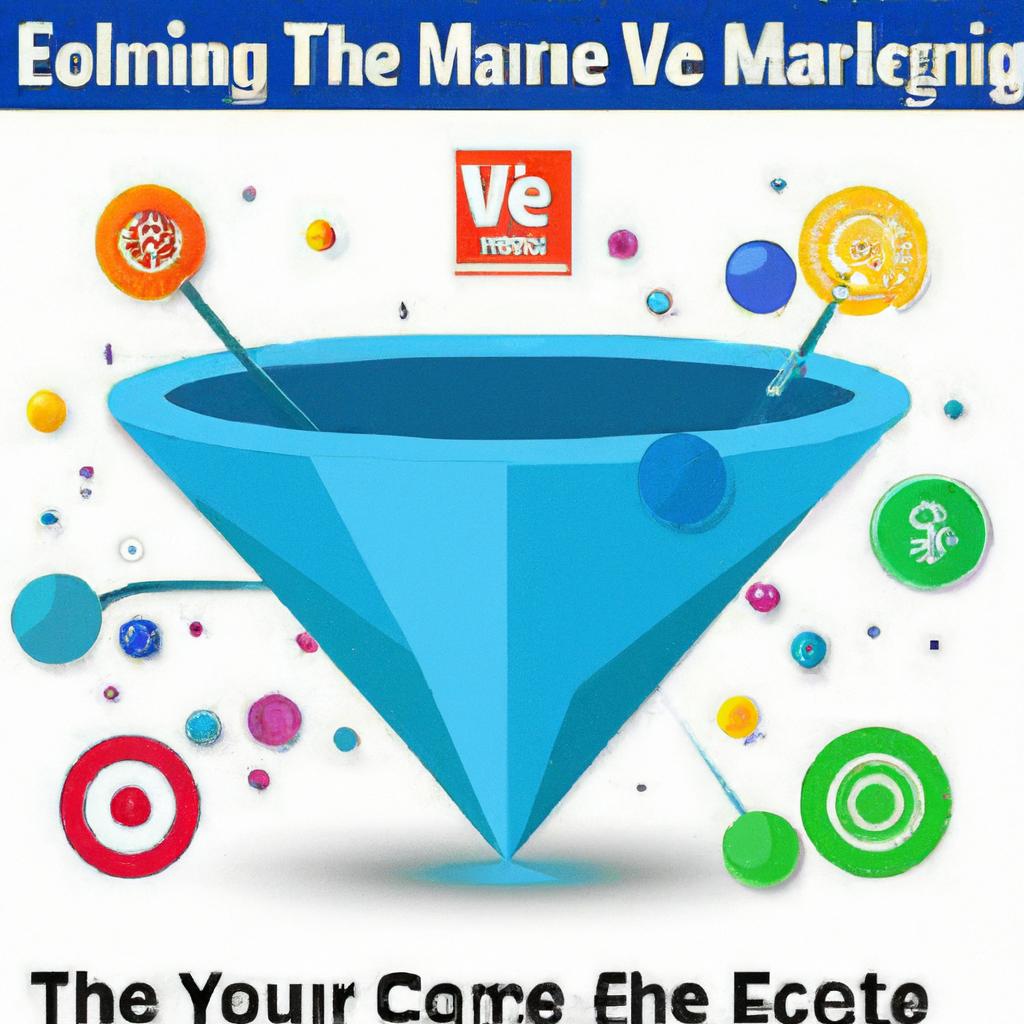
How to Create an Email Marketing Funnel That Converts
Do you ever find yourself hitting a wall when it comes to converting your email marketing efforts into actual sales? Fear not, because we’ve got the ultimate guide for creating an email marketing funnel that actually converts. From capturing leads to nurturing them through each stage of the sales journey, we’ve got you covered. Say goodbye to stagnant email campaigns and hello to a funnel that drives real results.
Table of Contents
- Building a Strong Foundation for Your Email Marketing Funnel
- Crafting Compelling and Relevant Content for Each Stage
- Optimizing Your Email Campaigns for Maximum Conversions
- Leveraging Data and Analytics to Fine-Tune Your Funnel Performance
- Q&A
- Concluding Remarks
Building a Strong Foundation for Your Email Marketing Funnel
One of the key components of a successful email marketing funnel is building a solid foundation. Without a strong foundation, your funnel may not be as effective in converting leads into customers. To create a strong foundation for your email marketing funnel, you need to focus on several key elements:
- Target Audience: Understand who your target audience is and tailor your emails to their needs and preferences.
- Compelling Content: Create engaging and valuable content that will resonate with your subscribers and encourage them to take action.
- Capture Leads: Implement strategies to capture leads and grow your email list with quality contacts.
- Automation: Use automation tools to streamline your email marketing process and deliver timely and relevant messages to your subscribers.
By focusing on these key elements and , you can increase your chances of converting leads into loyal customers. Take the time to evaluate your current email marketing strategy and make adjustments as needed to ensure that your funnel is optimized for success.
Crafting Compelling and Relevant Content for Each Stage
of your email marketing funnel is crucial to driving conversions. At the awareness stage, focus on creating engaging and informative content that captures the attention of your audience. Consider using eye-catching graphics, intriguing subject lines, and personalized messaging to draw in potential customers. Utilize bold fonts and colors to highlight key information and make it easy for readers to digest.
As prospects move through the consideration stage, provide them with more in-depth content that showcases the value of your products or services. Offer case studies, testimonials, and product demos to demonstrate how your offerings can solve their pain points. Use bullet points to break down complex information and make it easy to scan. Incorporate interactive elements, such as quizzes or surveys, to keep readers engaged and encourage them to take the next step in the buying process.
| Key Takeaways: | Create engaging content at the awareness stage |
|---|---|
| Provide in-depth information at the consideration stage |
Optimizing Your Email Campaigns for Maximum Conversions
Creating a successful email marketing funnel starts with understanding your audience and their needs. Segment your email list based on demographics, behavior, and preferences to personalize your messages and increase engagement. Tailor your content to each segment to provide value and build trust with your subscribers.
Utilize compelling subject lines and clear call-to-action buttons to encourage recipients to open your emails and take the desired action. A/B test different elements of your emails, such as copy, design, and timing, to optimize your campaigns for maximum conversions. Monitor your metrics closely and use insights to refine your funnel and drive better results over time. By continuously refining and optimizing your email campaigns, you can ensure that you are delivering the right message to the right person at the right time.
Leveraging Data and Analytics to Fine-Tune Your Funnel Performance
Utilizing data and analytics is crucial in optimizing your email marketing funnel for optimal performance. By analyzing key metrics such as open rates, click-through rates, and conversion rates, you can identify areas for improvement and make data-driven decisions to enhance your funnel’s effectiveness. Additionally, leveraging tools like A/B testing and user behavior tracking can provide valuable insights into what resonates with your audience, allowing you to fine-tune your messaging and calls to action for better results.
When it comes to creating a high-converting email marketing funnel, personalization is key. Segmenting your audience based on demographics, behavior, and engagement levels allows you to deliver tailored content that speaks directly to each individual recipient. By crafting targeted messages and offers that address their specific needs and interests, you can increase engagement and drive conversions. Remember, a well-optimized funnel is a continuous process of testing, analyzing, and refining to ensure you are maximizing your campaign’s performance.
Q&A
Q: What is an email marketing funnel?
A: An email marketing funnel is a strategic process that guides potential customers through the stages of awareness, consideration, and decision, ultimately leading them to make a purchase.
Q: Why is it important to create an effective email marketing funnel?
A: An effective email marketing funnel helps businesses build relationships with customers, increase brand loyalty, and ultimately drive sales conversions.
Q: What are the key components of an email marketing funnel?
A: The key components of an email marketing funnel include lead magnet, landing pages, automated email sequences, and conversion tracking.
Q: How can businesses create compelling content for their email marketing funnel?
A: To create compelling content for an email marketing funnel, businesses can focus on providing valuable information, engaging storytelling, and personalized messaging tailored to the needs and interests of their target audience.
Q: What are some best practices for optimizing an email marketing funnel for conversions?
A: Some best practices for optimizing an email marketing funnel for conversions include A/B testing, segmenting your email list, providing clear calls to action, and analyzing data to make informed decisions.
Q: How can businesses measure the success of their email marketing funnel?
A: Businesses can measure the success of their email marketing funnel by tracking key performance indicators such as open rates, click-through rates, conversion rates, and revenue generated from email campaigns.
Concluding Remarks
As you navigate the world of email marketing funnels, remember that converting leads into customers is a delicate dance of strategy and creativity. By following the steps outlined in this article, you are well on your way to creating a robust and effective email marketing funnel that drives results. Take the time to test, tweak, and refine your approach, and soon you’ll be converting leads with ease. Happy funnel building!


